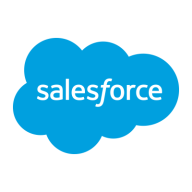

Find out what your peers are saying about Microsoft, Oracle, SAP and others in Relational Databases Tools.
All applications need our repository to provide services for our online business or our customers, so the return is good.
This saves a significant amount of time, particularly for reports that would have needed around fifty people.
The ROI of using Tableau extends to its seamless integration across various platforms, as it's from Salesforce and thus not limited to any specific cloud provider.
Tableau is saving me time, money, and resources, which I would rate as ten.
When we created support tickets, the experience was very positive.
They provide quick email and phone responses and have Thai-speaking personnel.
There should be consistent standards for all users.
The technical support for Tableau is quite good.
The server where we installed it has grown from 64 gigabytes in RAM to 256 gigabytes, demonstrating significant scalability capabilities.
Tableau is easy to use across various dimensions, whether on-premises or on the cloud.
The solution is fully scalable and performs well even with large datasets, provided there is proper supporting hardware.
Tableau is easy to scale.
The application hangs after continuous use due to the buildup of cache.
I rate the stability a five or six because Tableau updates very often with new versions or patches.
I would appreciate using Microsoft Pro as it can integrate with Excel or, with a simple query, consume information from the database using Microsoft Excel.
When we consider the price for replication in another site, the pricing becomes prohibitive.
We cannot send the entire Excel file reports via email within Tableau.
The product owner should enhance its benefits or clarify its role.
It sometimes requires extensive investigation to determine why the data does not appear correctly.
Power BI as a much cheaper alternative.
A license for 150 users costs around $17,000 USD per year.
Looker is known to be quite expensive.
I have been working with SQL Server for a long time, and it works well for me as I am using it in different applications, such as web applications, Windows applications, or the data warehouse reporting.
The best features of SQL Server are availability and stability.
A significant feature for me is the real-time connection to data sources because it effectively manages large data sets.
Tableau serves as a stable dashboarding tool for higher management, aiding in quick decision-making.
Building hyper extracts and visualization capabilities make Tableau a robust tool for data analysis.
| Product | Market Share (%) |
|---|---|
| SQL Server | 15.5% |
| Oracle Database | 12.6% |
| SAP HANA | 9.6% |
| Other | 62.3% |
| Product | Market Share (%) |
|---|---|
| Tableau Enterprise | 10.3% |
| Microsoft Power BI | 14.1% |
| Amazon QuickSight | 4.9% |
| Other | 70.7% |


| Company Size | Count |
|---|---|
| Small Business | 121 |
| Midsize Enterprise | 58 |
| Large Enterprise | 112 |
| Company Size | Count |
|---|---|
| Small Business | 117 |
| Midsize Enterprise | 66 |
| Large Enterprise | 182 |
SQL Server is a relational database management system (RDBMS) by Microsoft. The product's main purposes are to store data and retrieve it as requested by other software applications - on the same computer or on another computer across a shared network. The solution is built on top of Structured Query Language (SQL), which is a standardized programming language used for relational database management.
The product is tied to Transact-SQL (T-SQL), which is an implementation of SQL from Microsoft that adds several proprietary programming extensions to the standard language. SQL Server is built similarly to other RDBMS products, as its structure is a row-based table that connects related data elements in different tables to one another. One of its most important components is the SQL Server Database Engine, as it controls data processing, storage, and security. Beneath the Database Engine is the SQL Server Operating System, which is used for memory and I/O management, locking data to avoid unneeded upgrades, and job scheduling.
The solution has four editions with different sets of services and tools. They include:
The first two are available for free and are typically utilized by smaller companies, as they work with fewer functions and storage. The second two editions are generally used by bigger organizations and enterprises and offer more features.
The solution has several functions through which users can facilitate different data-related processes. These include:
SQL Server Services
SQL Server has a wide range of add-on services that provide additional benefits beyond database management. These services include:
SQL Server Benefits
The solution has many benefits for users. These include the following:
Reviews from Real Users
A president at a consultancy evaluates SQL Server as a veteran solution with critical log shipping feature.
Harkamal S., a user at a manufacturing company, rates SQL Server with a high mark because it is a stable, scalable, and easy-to-deploy solution that pretty much covers everything.
Tableau Enterprise offers powerful features for creating interactive visualizations, dashboards, and maps, including drag-and-drop functionality and easy integration with multiple data sources, promoting real-time collaboration and self-service analysis.
Tableau Enterprise stands out with its ability to create user-friendly, interactive visualizations, making it pivotal for business intelligence applications. Users benefit from its seamless connectivity and advanced analytical functions, facilitating data blending and storytelling. Despite a complex learning curve and high licensing costs, its features like geospatial analysis and efficient content distribution drive its indispensable value for data-driven insights. Enhancements in predictive analytics and support integration with machine learning tools further its capabilities across industries.
What are the most valuable features?Tableau Enterprise is widely used for business intelligence, supporting industries like healthcare, telecommunications, and finance. Organizations utilize it to analyze performance indicators, operational insights, and financial analytics, enhancing decision-making through interactive reports and real-time data integration.
We monitor all Relational Databases Tools reviews to prevent fraudulent reviews and keep review quality high. We do not post reviews by company employees or direct competitors. We validate each review for authenticity via cross-reference with LinkedIn, and personal follow-up with the reviewer when necessary.